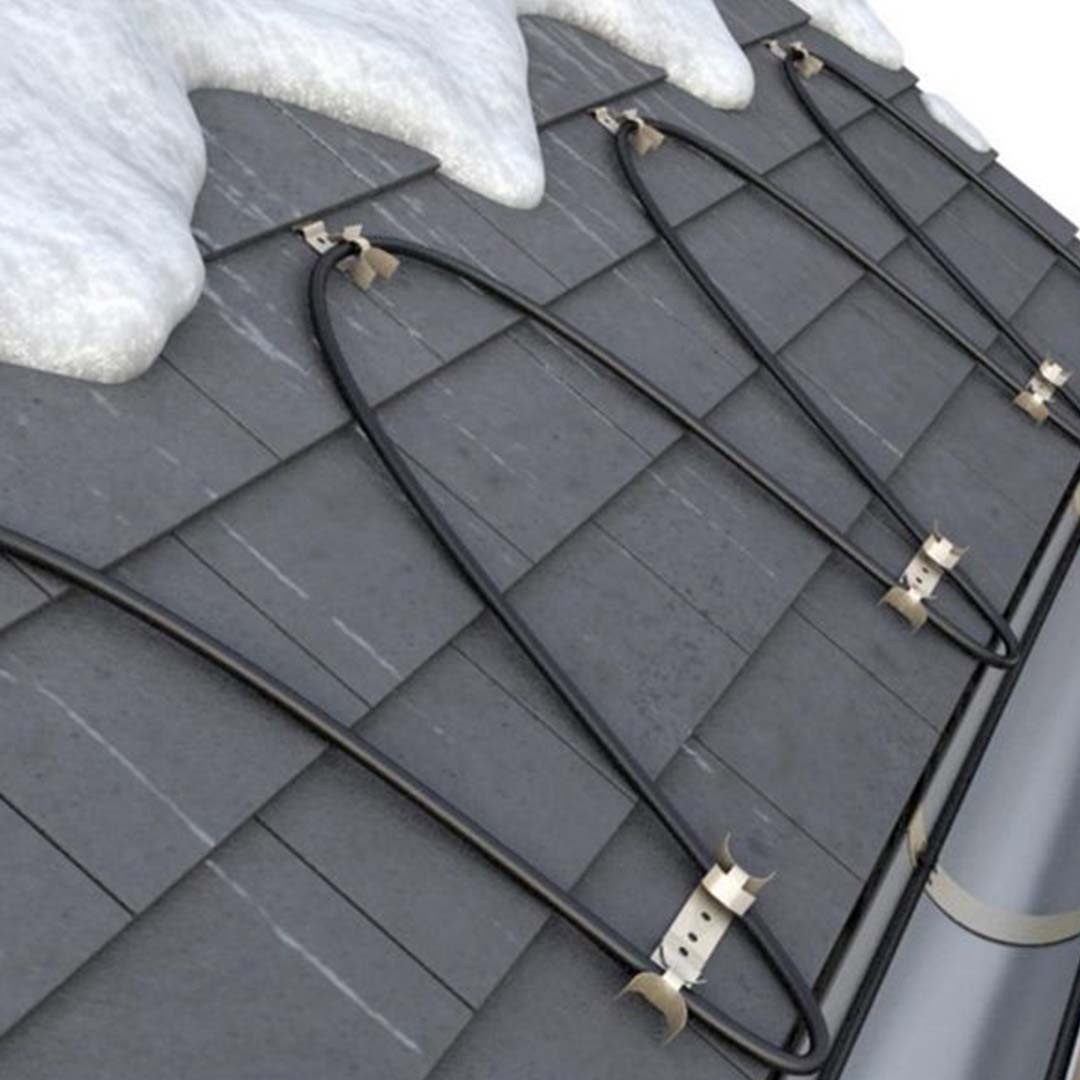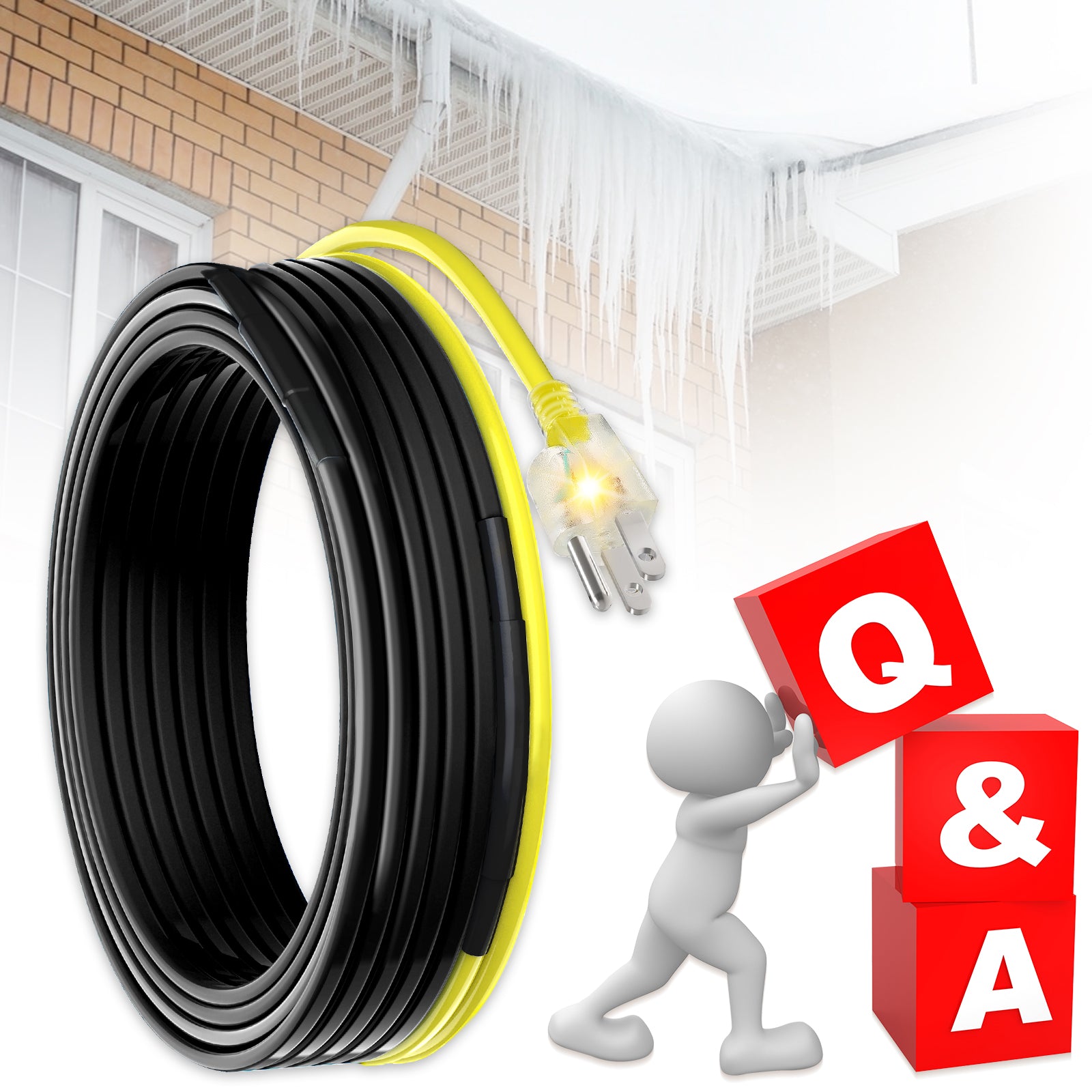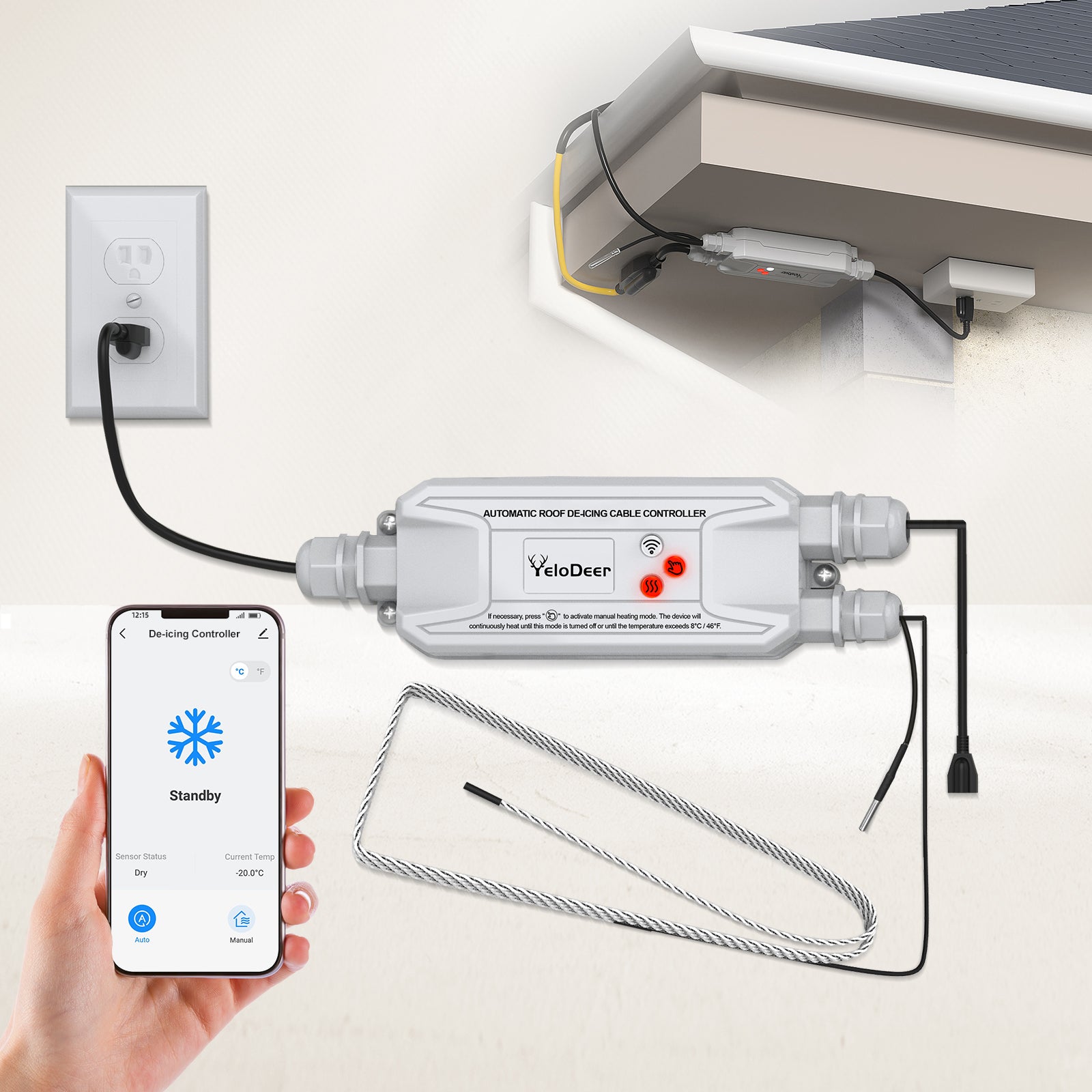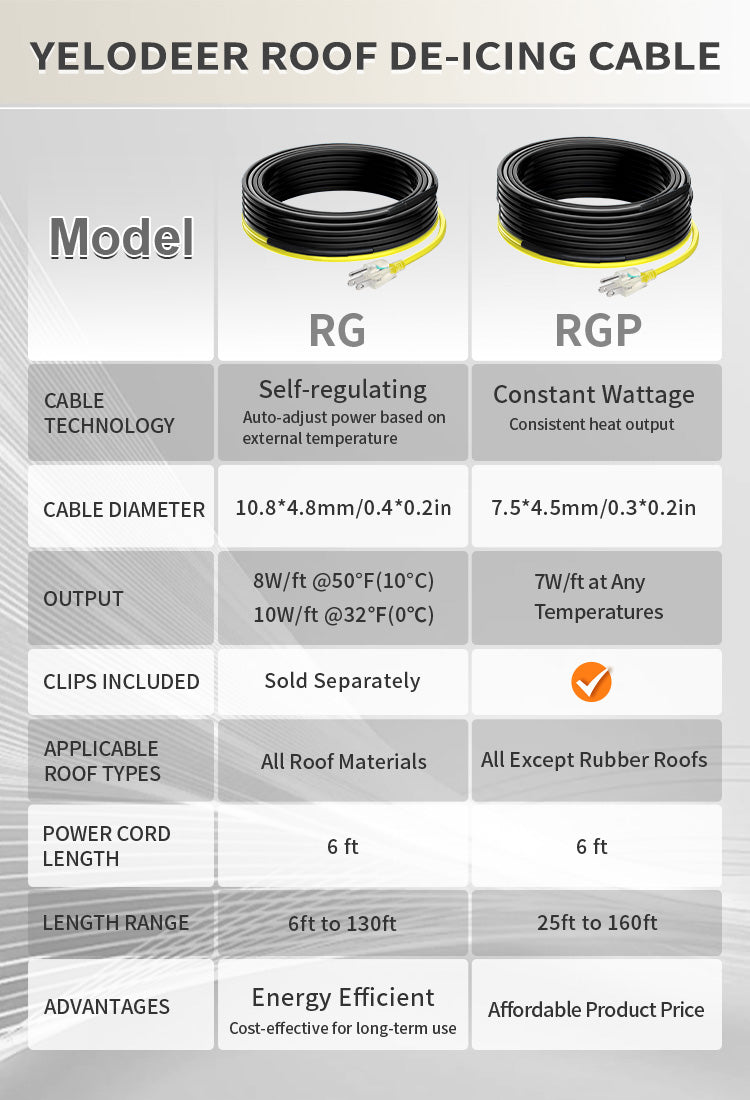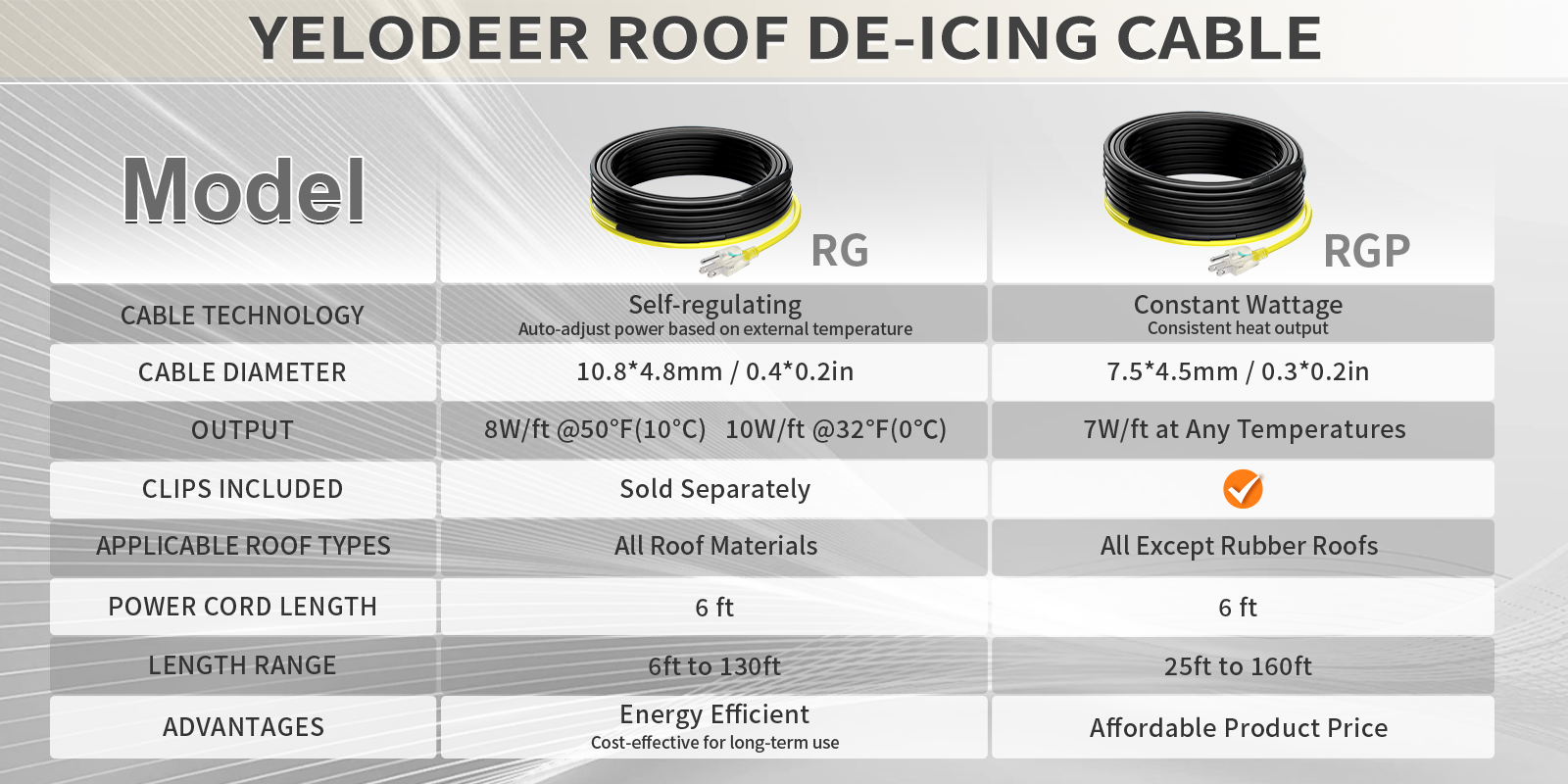Roof De-icing
4 products
Vendor:
YeloDeer
YeloDeer Bulk Heating Cable Roll, Cut to Length Self-Regulating Heat Tape for Roof de-icing and Pipe Heating
Regular price
From $265.99 USD
Sale price
From $265.99 USD
Self-Regulating
Cut-to-Length
CSA Certified
Vendor:
YeloDeer
YeloDeer Gutter Heat Trace Cable, Self-regulating Heat Tape Pro with 6ft Power Cold, 8W/Ft
Regular price
From $18.99 USD
Sale price
From $18.99 USD
Regular price
$32.99 USD
Model: RG
Self-regulating
Vendor:
YeloDeer
YeloDeer Roof Clips, for Roof De-Icing Heating Cable, Non-Corrosive Aluminum
Regular price
From $18.99 USD
Sale price
From $18.99 USD
Model: RC
Accessories for RG
Vendor:
YeloDeer
YeloDeer Roof De-icing Cable Controller, Automatic On/Off with Temperature & Moisture Sensors, Energy-Saving Design
Regular price
$65.99 USD
Sale price
$65.99 USD
Regular price
$99.99 USD
Model: RHC
YeloDeer Roof & Gutter Deicing Cables
- Protect your home or business from the hazards of ice and snow with YeloDeer’s Roof & Gutter Deicing Cable System. Ice accumulation on your roof or inside your gutters can lead to expensive water damage and structural issues. Our high-quality heating cables offer a dependable solution for preventing ice dams in gutters, downspouts, overhangs, and other vulnerable areas, ensuring that your roof remains secure even during the harshest winter storms.
- YeloDeer offers two highly effective deicing cable options. Our self-regulating cables automatically adjust their heat output based on external temperatures—ramping up power during severe ice conditions to speed up melting, and reducing output as temperatures rise, saving you energy and money. Alternatively, our constant wattage cables provide consistent heat output at a lower price, making them an economical choice for ice protection.
- Both options are suitable for a range of roof types, including metal, ceramic, slate, asphalt, and synthetic, providing versatile solutions for different properties.
